John B. Garland and The Blood Book
When it comes to stories, perspective makes all the difference in the world. Depending on who’s telling the story, some facts are presented in bold-type while other don’t rate a mention at all.
I can’t think of a better example than that of John Bingley Garland.
If you were to ask a Newfoundlander who John Bingley Garland was they might tell you a politician or, maybe if you were from Trinity, a prominent businessman.
In some circles, especially those connected with Victorian curiosities, you’d get a completely different answer. They’d likely tell you he was the fellow that made The Blood Book.
Who was John Bingley Garland?
John Bingley Garland was the son of Poole-born merchant George Garland, and Newfoundland-born Amy Lester. He was born in 1791 and spent his youth in England.
In June 1819 he came to Newfoundland. He, and his brother George Jr., were tasked with running his family’s Trinity-based fishing business. He wasn’t on the island long before he began to make a name for himself.
Barely a month after arriving Garland took the oath of office as a magistrate. He became licenced to perform marriages and was active in the church. In October 1821 he opened the second St. Paul's Church in Trinity (the current St. Paul’s Church in Trinity is the third on the site and dates to 1892).
Modern St. Paul’s Church, Trinity, NL
In the next 10 years John spent little time Trinity, NL. He returned to Poole, where he served as mayor.
Despite his only occasional presence, he was held in high esteem by the people of Trinity. In 1832 he was nominated, and ran unopposed, for the District of Trinity Bay in the election for the first House of Assembly in Newfoundland. Upon his acclamation, he was carried “in a chair on the shoulders of four lusty fellows and deposited on the ground in front of his residence.”
Garland was subsequently elected Speaker of the House, giving him the distinction of delivering the first formal address ever in the Newfoundland Legislature.
Despite this auspicious beginning, Garland’s time in Newfoundland was coming to an end.
Lester-Garland House, Trinity, NL
In 1834 Garland left island.
His brother died in 1833 and, some say, he was so deeply saddened that he decided to move home. Others say he left Newfoundland because his wife was unhappy with colony life. Whatever the reason Garland up his seat in the House and ceased his active role in his Trinity business.
He returned to England and in the following years Garland’s personal commercial interests dwindled. He died in 1875 at the age of 83.
Garland may have spent only a short time on the island but, nearly 200 years later, he’s remembered in the Newfoundland political story and his family-name still marks a provincial historic site in Trinity.
That’s the John B. Garland story from the Newfoundland perspective. He’s thought of differently by some, especially those in artistic circles. For them he’s remembered less for his politics and more for his scrapbooking.
Garland’s Blood Collages
Scrapbooking and decoupage were popular pastimes in the Victorian Era England and Garland seems to have become enamoured with the craze. Sometime in the middle of the century he began to make elaborate collages.
His source images were taken from books and included natural history prints, religious imagery, and colour prints of flowers. He layered image on top of image and created busy, sometimes almost overwhelming scenes. He often filled any remaining space with handwritten text.
If he’d stopped there we wouldn’t likely be talking about his art today. He took it one step further - he carefully painted bright red drips of blood (in ink) across his pages.
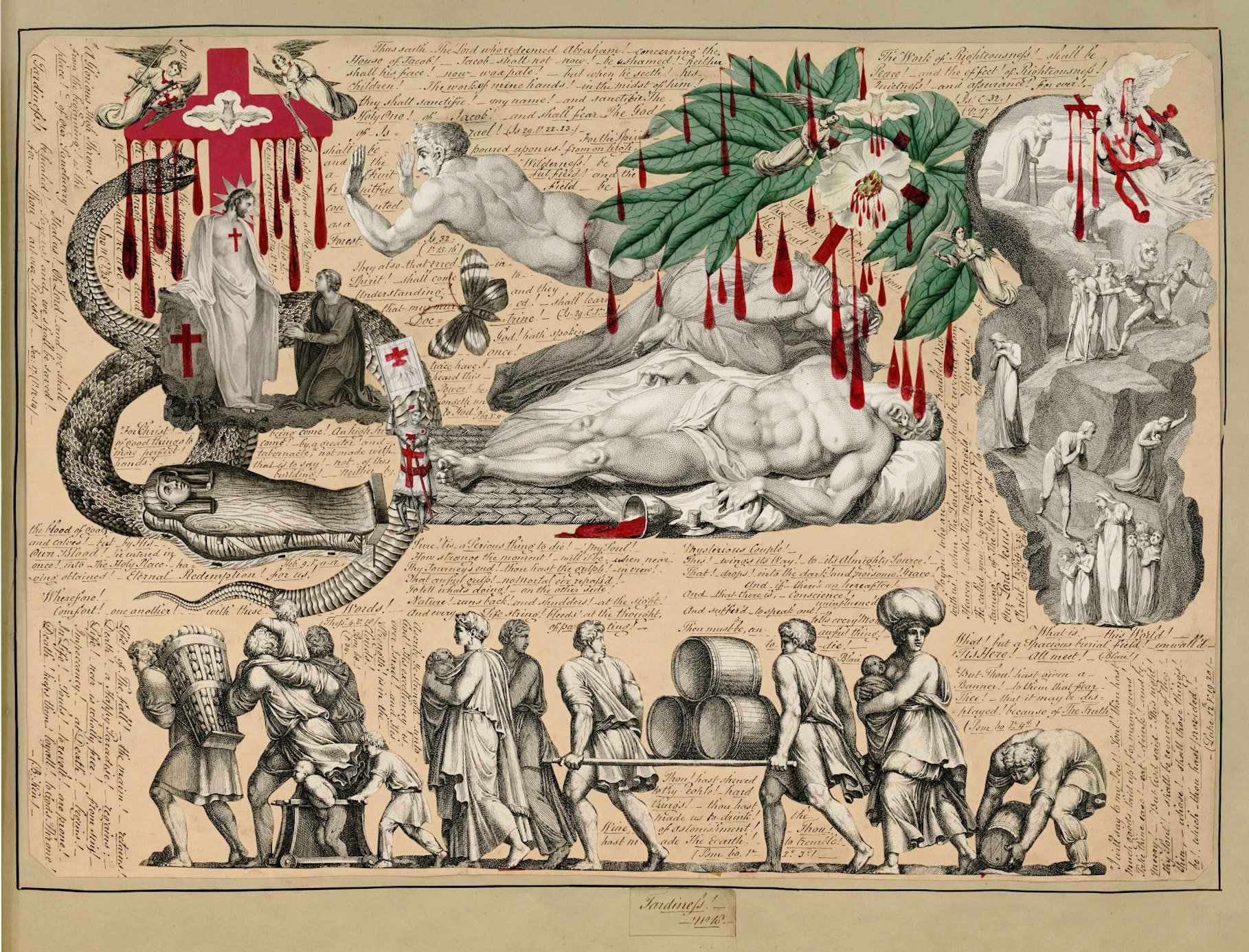
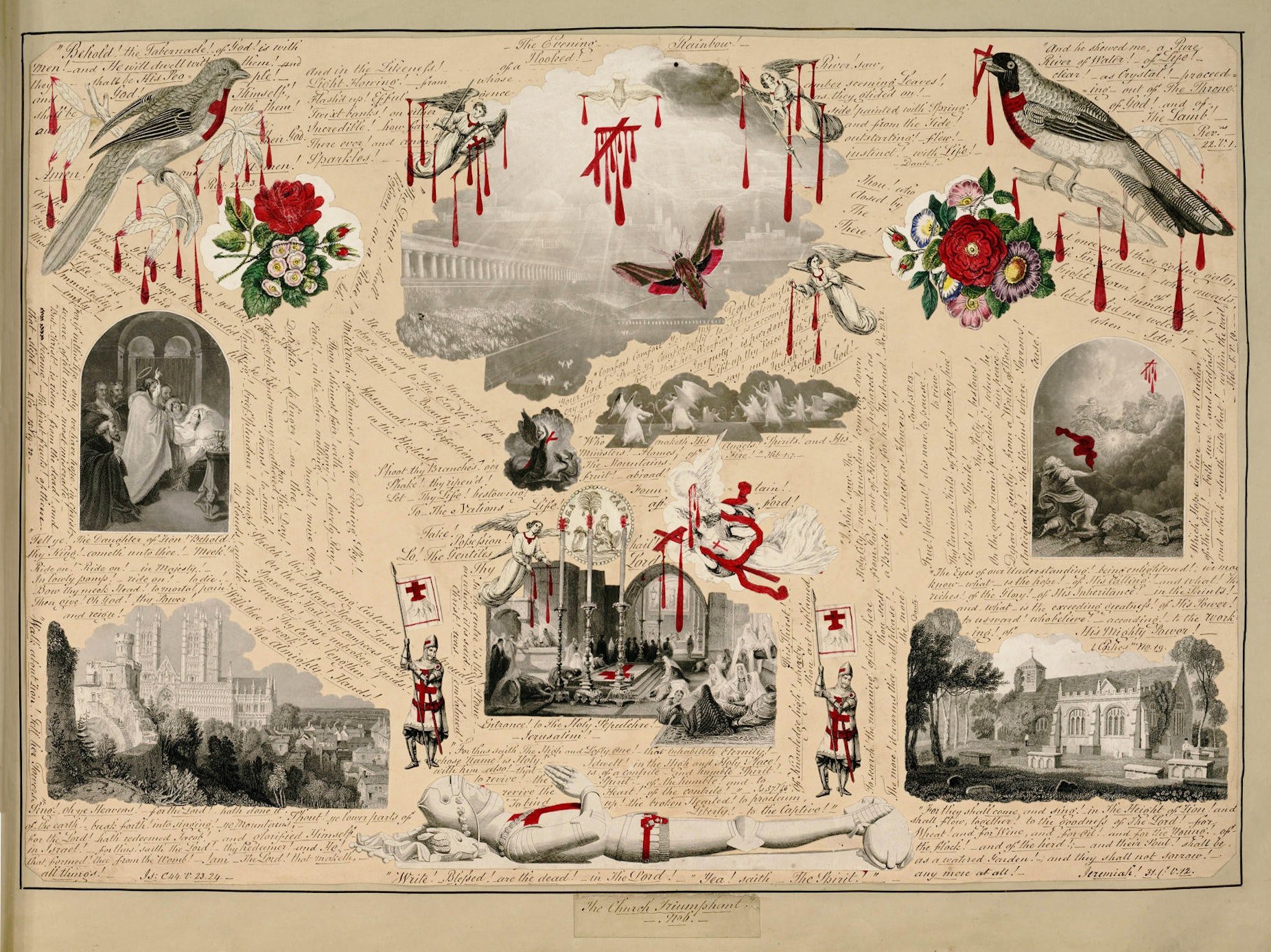
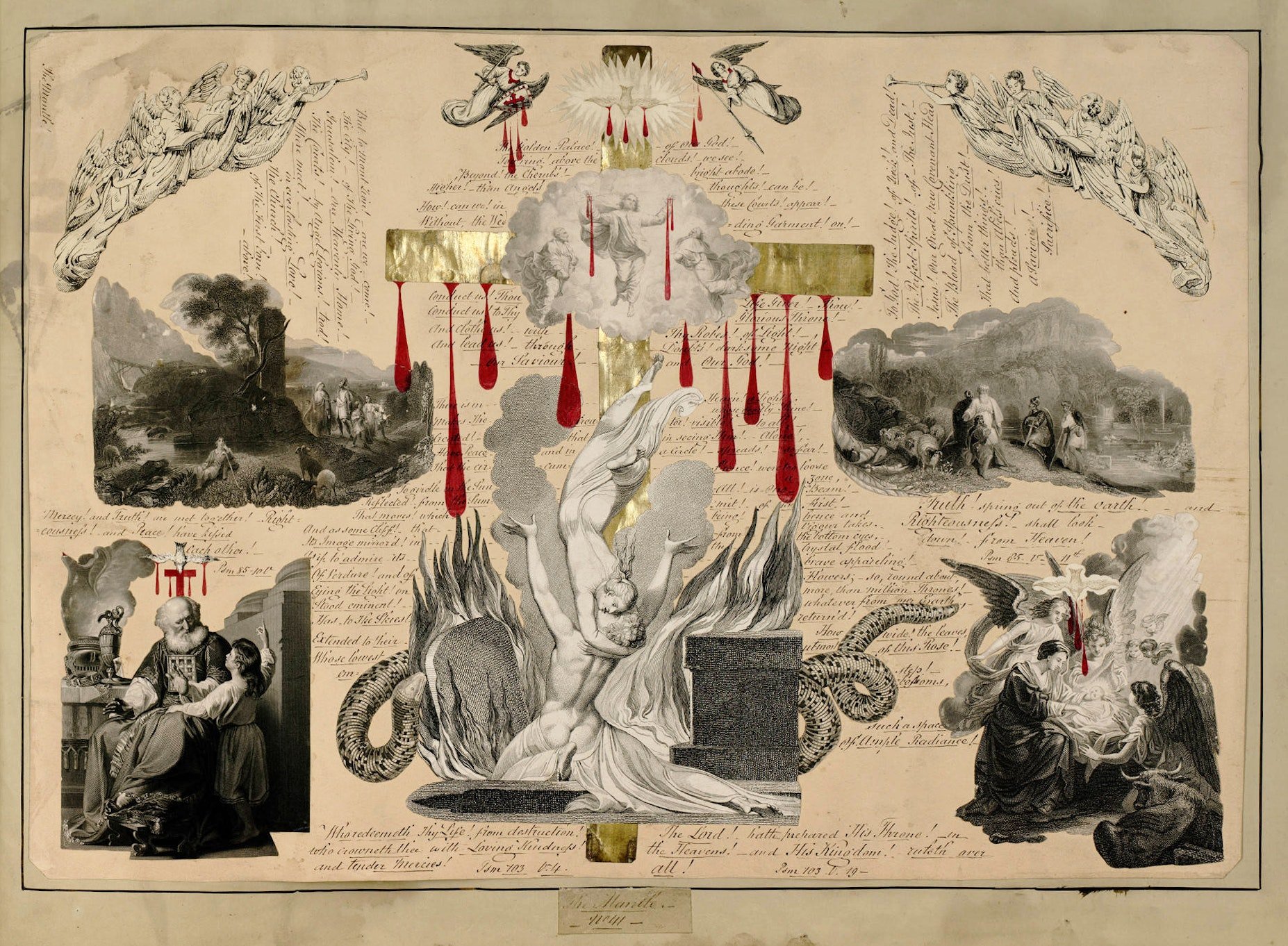
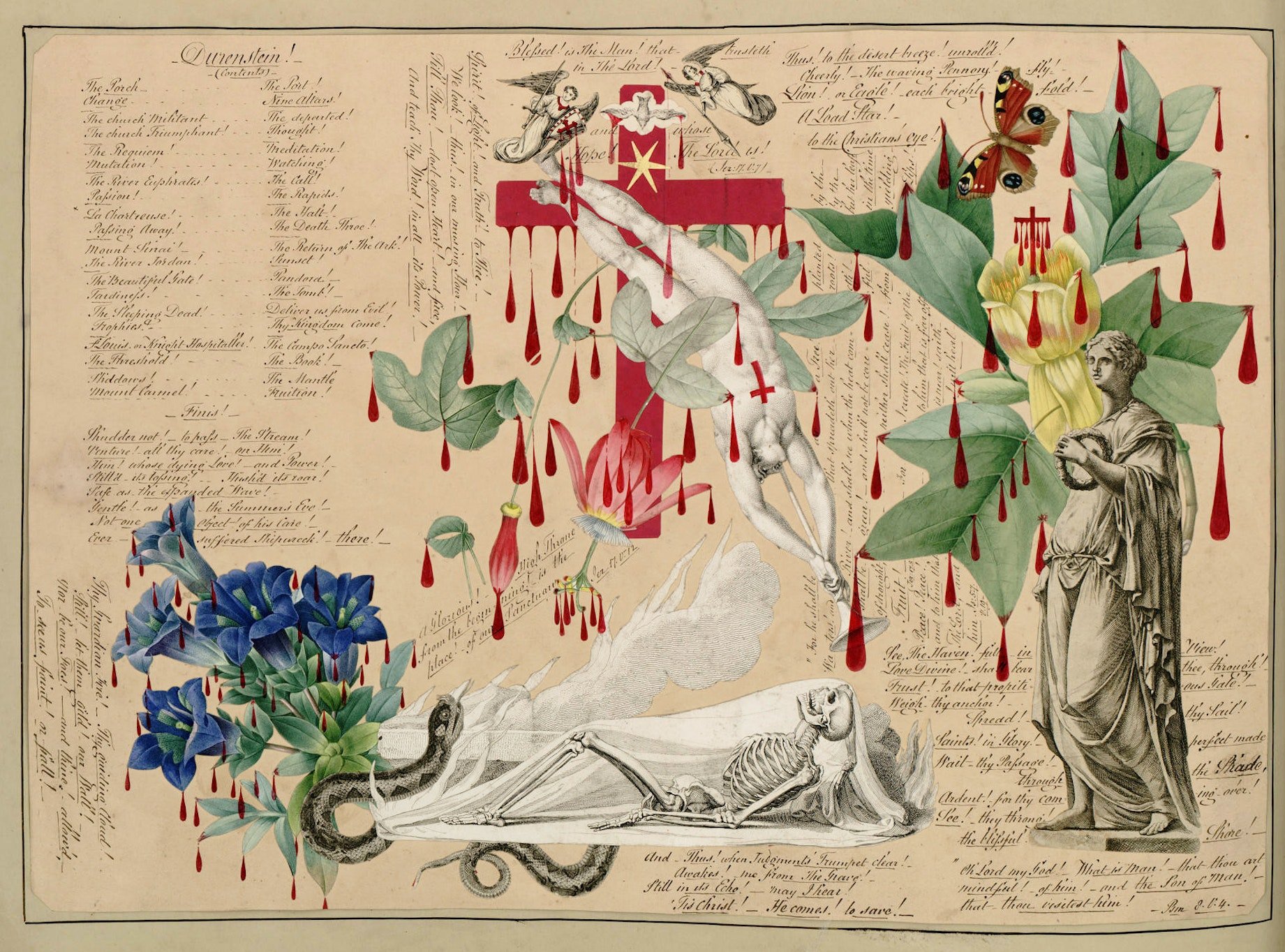

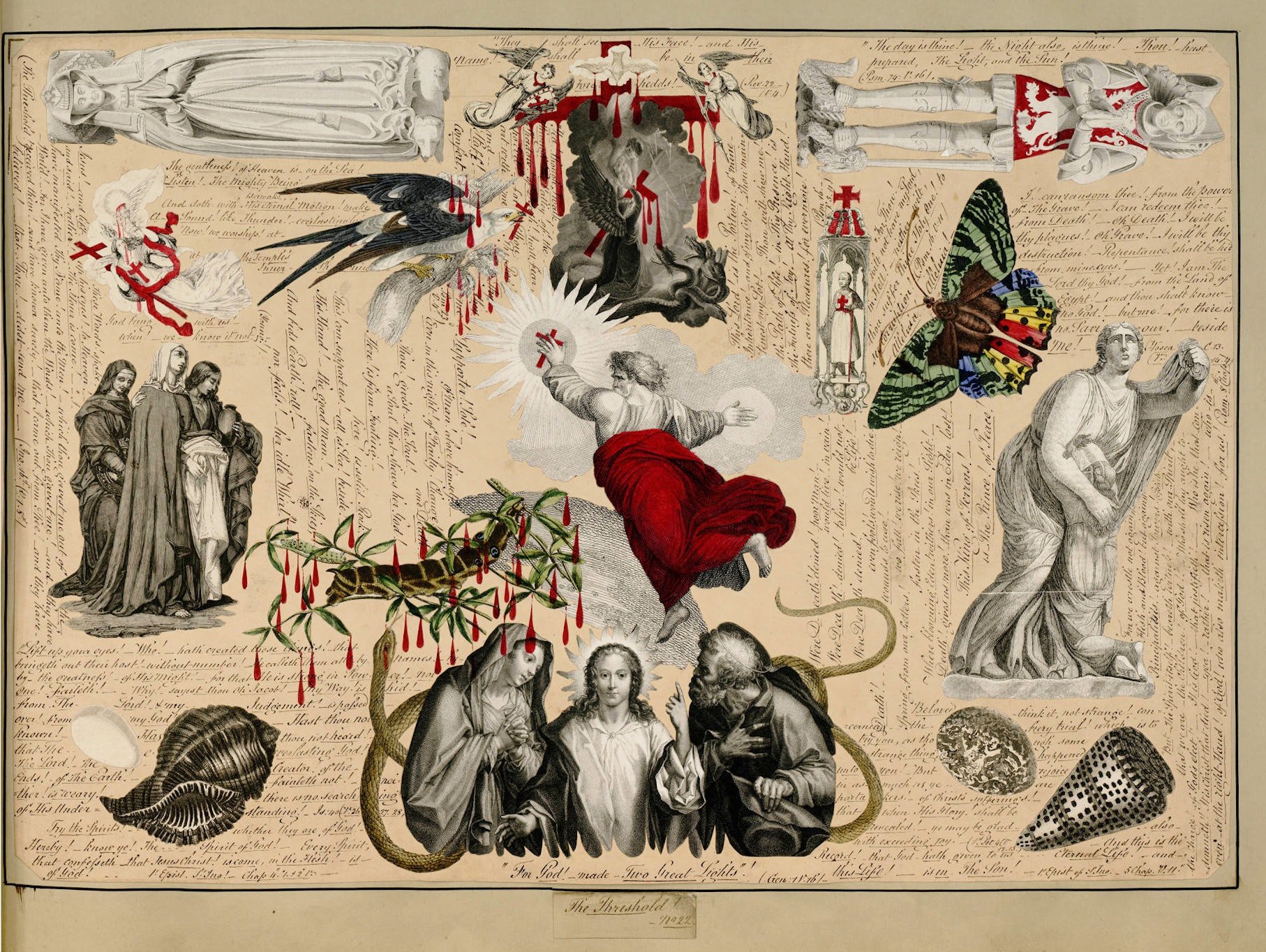
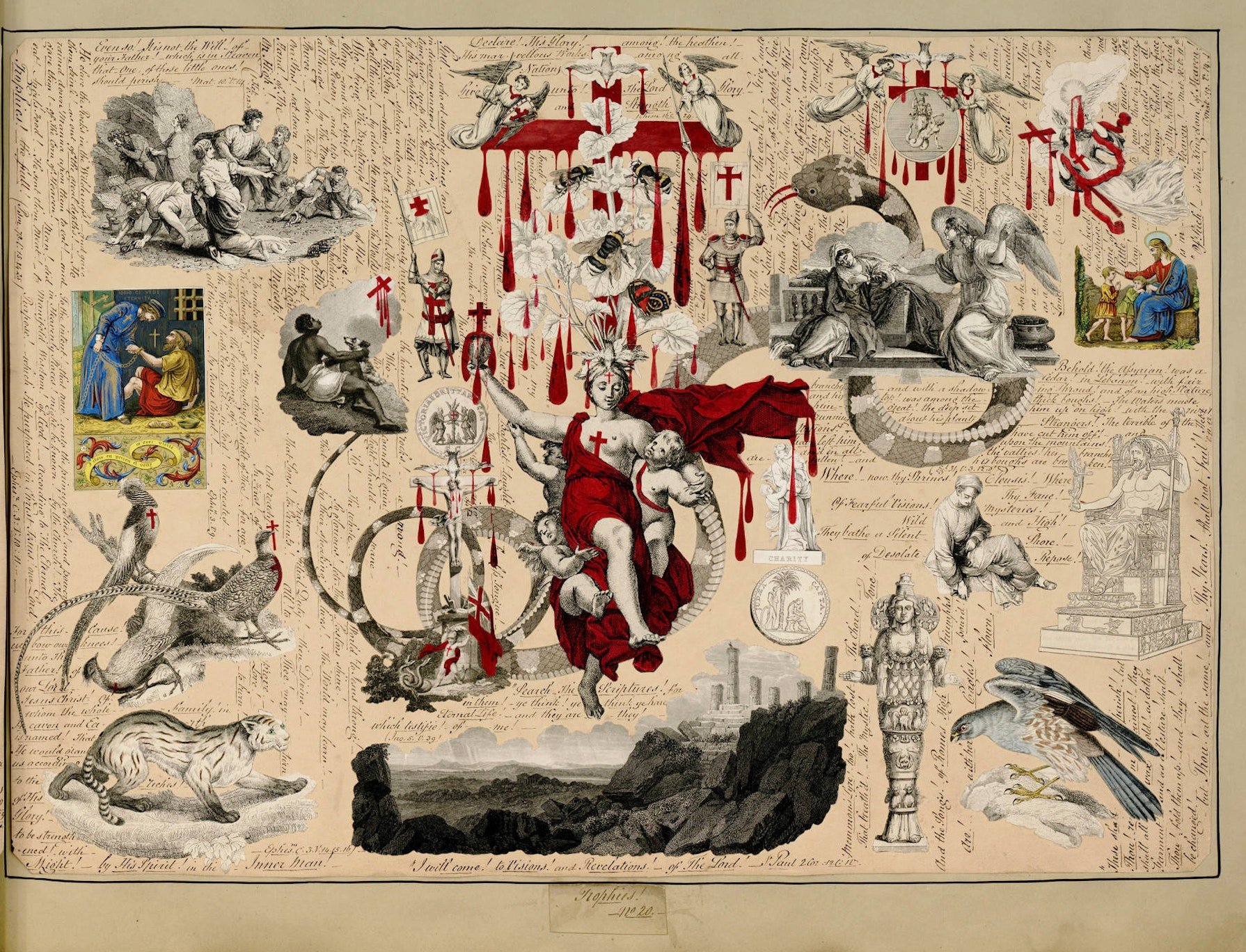

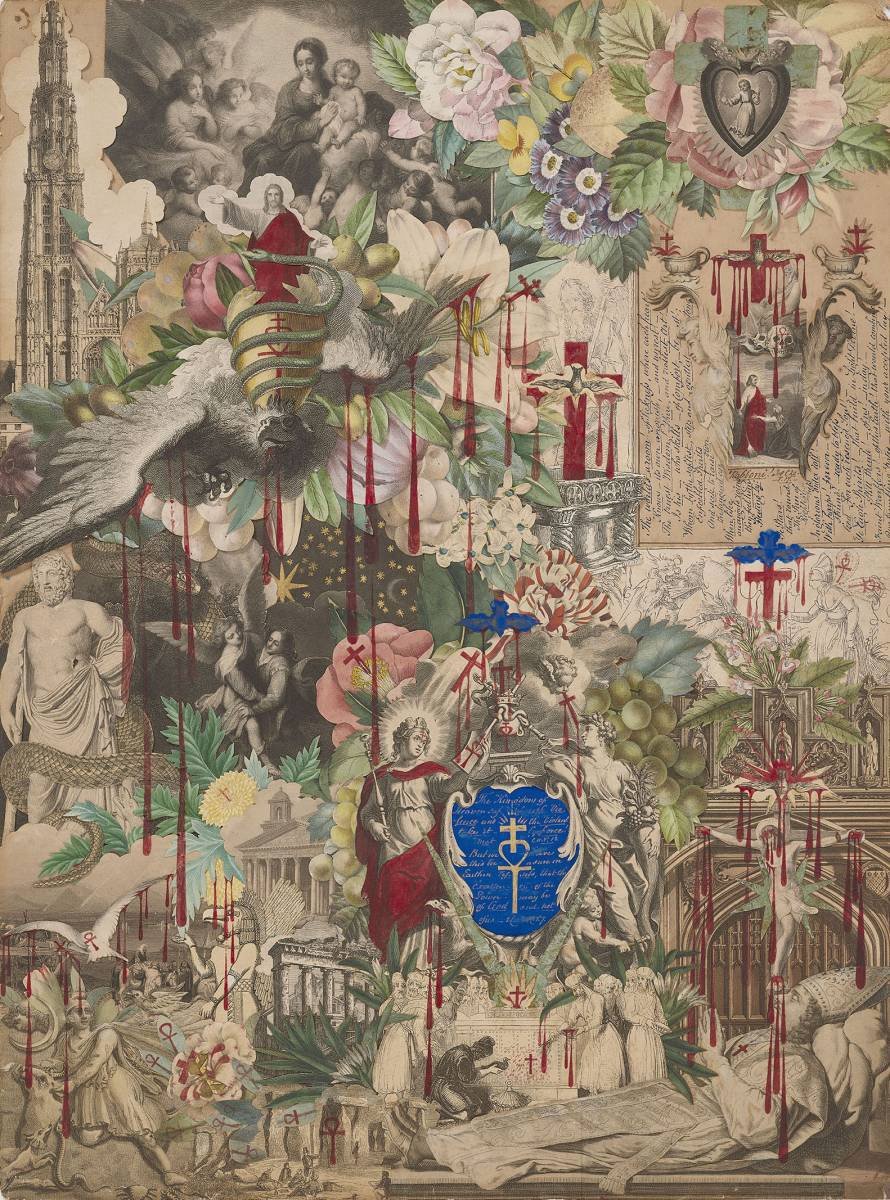

A section of Garland’s Blood Collages, public domain.
In the eyes of art aficionados, Garland’s carefully painted blood motifs elevated his collages from mere-scrapbooking. According to a publication from London Art Week, the inclusion of the blood transformed “Garland from a Victorian merchant and colonial administrator to one of the most remarkable ‘outsider’ artists of nineteenth-century Britain.”
In some regards, Garland was ahead of his time. His technique was reminiscent of Cubism — an artistic movement not seen until the early twentieth century.
It’s not known how many collages Garland made, but at least 45 survive. There are 4 large collages and the book Durenstein! (aka The Blood Book).
Durenstein! is a hand-crafted, 43-page, folio-sized book. Garland gave it to his daughter Amy on the occasion of her wedding in 1854. It eventually left the Garland family and today it is housed in the Harry Ransom Centre at the University of Texas. Where it has been digitized and it’s available online.
It’s worth exploring, if only to demonstrate that our stories of historical figures often omit some pretty strange truths.
-
John B. Garland, The Book of Newfoundland
Archives Contain Last Will and Testament of First Speaker, Bert Riggs, Heritage NL
The Blood Collages of John Bingley Garland, Public Domain Review
Durenstein!, Harry Ransom Centre, University of Texas
Garland Collages, London Art Week.
Garland Collages, Minneapolis Institute of Art





Discover the Brigus Tunnel, a historic Newfoundland heritage site built in 1860 for the cod fishery—now linked to pirate legends and folklore.